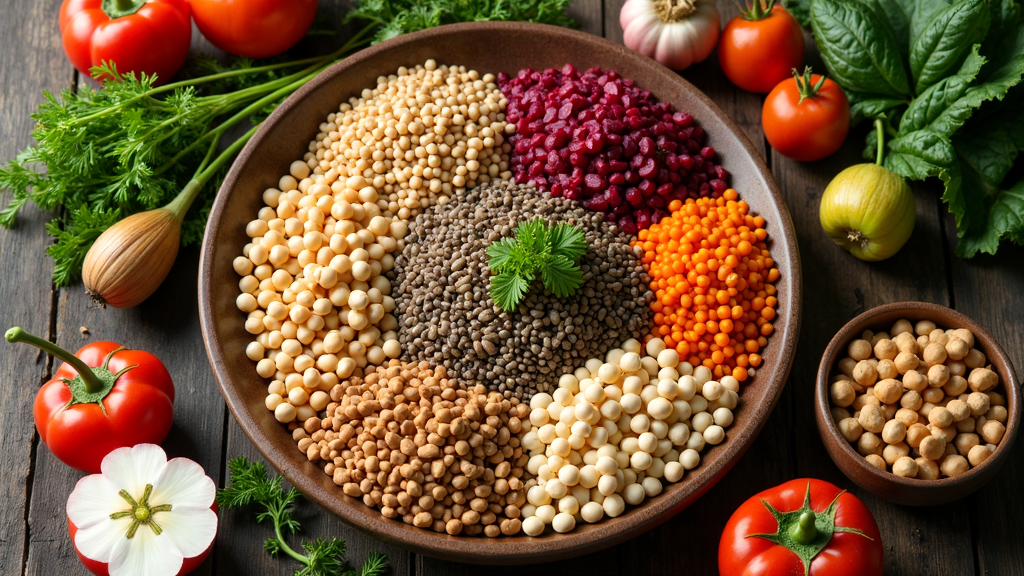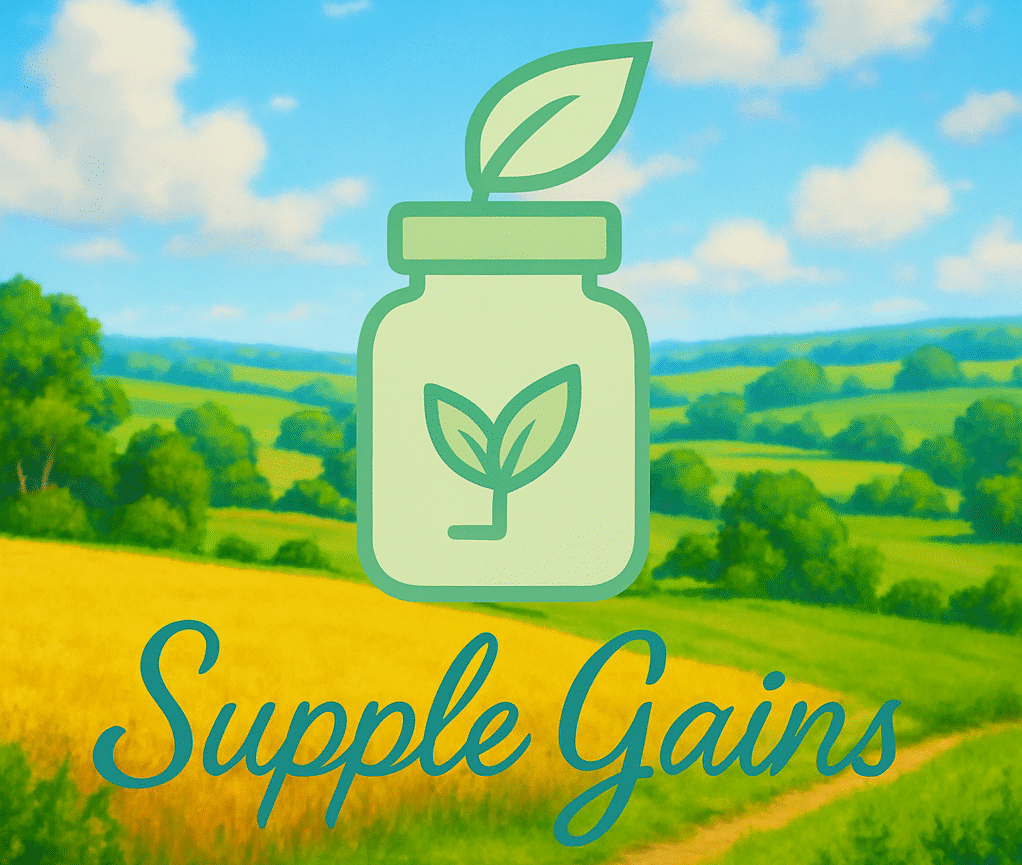Getting enough protein on a plantbased diet can feel tricky at first, especially when switching from eating animal products. With some simple planning and a basic knowledge of proteinrich plant foods, hitting your protein goals gets much easier. Here’s my breakdown to guide you through stocking your plate with plenty of plant muscle fuel.

Understanding PlantBased Protein Basics
Protein isn’t just for athletes; it helps with everything from muscle repair to healthy hair, nails, and immune function. Protein is made of amino acids, and some of those are considered “essential” because my body can’t make them, so I need to get them from food.
Plant sources like beans, grains, nuts, soy, and veggies all contain protein. Some, such as tofu or lentils, have more, while others contribute smaller amounts. It’s totally possible to get what you need if you balance different sources throughout your meals.
Most adults need somewhere between 0.8 to 1.0 grams of protein per kilogram of body weight daily. The number can jump higher if you’re very active or pregnant, but most folks who add up their meals are surprised at how doable this target is on plants. Keep in mind that all sorts of people, from athletes to busy parents, have thrived for years by making plantbased protein work for their needs.
HighProtein Plant Foods to Know
Some plant foods are especially handy for ramping up your protein. Here are the most popular choices I always keep stocked:
- Legumes: Beans, lentils, and chickpeas pack protein, plus fiber and minerals. Black beans and lentils are superstars, offering about 7-9 grams per halfcup cooked.
- Soy Products: Tofu, tempeh, and edamame are soybased and have protein totals similar to meat (8-15 grams per 4ounce serving). They take on flavor well in all sorts of dishes.
- Whole Grains: Quinoa, farro, and brown rice add protein and complement legumes for a fuller amino acid profile. Quinoa is a favorite because it’s a “complete protein” with all the essential amino acids.
- Nuts and Seeds: Almonds, cashews, peanuts, chia seeds, hemp seeds, and pumpkin seeds are great for toppings, snacks, and creamy sauces. Just two tablespoons of hemp seeds give me about 6 grams of protein.
- Meat Alternatives: Storebought veggie burgers, mock meats, and plantbased deli slices can be proteinrich but always check the nutrition label, since some are more carbs or fat than protein.
Easy Ways to Boost Protein at Every Meal
There’s no need to track every gram, but I find it helps to be a bit mindful of food choices. Here are some simple swaps and meal ideas I use to sneak more protein into a plantbased day:
- Breakfast: Add chia or hemp seeds to oatmeal, blend silken tofu into smoothies, or spread peanut butter on wholegrain toast for a protein jumpstart.
- Lunch: Toss chickpeas on salads, layer hummus and beans in wraps, or make lentil soup for a protein punch.
- Dinner: Pile your plate with stirfried tofu, tempeh tacos, chili, or pasta tossed with white beans and spinach.
- Snacks: Keep roasted soy nuts, trail mix with pumpkin seeds, or homemade protein bars handy for betweenmeal energy.
You can mix and match these options to fill in protein throughout the day. Try for a source at every meal. Getting enough will become much easier.
Common Challenges and How to Fix Them
Getting protein from plants feels new at first, but most obstacles are simple to handle once you know what to watch out for:
- Falling Into a Carb Trap: Grains and starchy veggies are great, but it’s helpful to balance them with beans, tofu, or proteinheavy seeds so meals stay filling and nutrientdense.
- Getting Stuck in a Rut: Varying protein sources brings more nutrients and keeps things more interesting. Try rotating lentils, black beans, tempeh, edamame, nuts, and seeds rather than leaning on just one food.
- Digestive Upset: Beans and fiber can be tough on the stomach if you add them quickly. I always soak my beans, cook them well, and build up slowly if I’m not used to highfiber plant foods yet.
- Convenience: Sometimes it’s just not practical to cook everything from scratch. Canned beans, frozen tofu, and prepared vegan foods can save time and lower stress. I always keep backup options for busy nights.
Combining Foods for a Complete Nutrition Boost
Some people wonder about “complete” proteins. Most plants don’t have all nine essential amino acids in big amounts, but eating various protein sources through the day does the trick. For example, beans have lots of lysine but less methionine, while grains offer the reverse. Eating rice and beans, or hummus with wholegrain pita, lets your body easily assemble a full set of amino acids. This combo is traditional in many cultures for good reason. It supports a super detailed amino acid profile that your body will thank you for.
How I Batch Prep for a ProteinPowered Week
Taking a little time to prep makes it way easier to hit protein targets even during the busiest week. Here’s one of my favorite routines:
- Cook a double batch of lentils or black beans at the start of the week
- Bake a tray of tofu or tempeh cubes for tossing on salads or bowls
- Keep nuts, seeds, or roasted chickpeas handy on the countertop for grabandgo snacks
- Mix up hummus or bean dips for lunches and veggie snacks
This kind of prep takes a little effort up front but saves me tons of time. It also prevents those “what’s for dinner?” headaches and helps me stick to plantpowered eating even when work or life gets hectic. Plus, having ready proteins on hand means I’m less likely to reach for nutritionally weak processed snacks at the last minute.
PlantBased Protein Powders: Are They Worth It?
Most people get plenty of protein from whole foods, but sometimes a powder supplement helps, especially if I’m very active or have higher needs. Plant protein powders made from pea, brown rice, and hemp are widely available. I check the label to make sure they’re low in added sugar, and I use them in smoothies when needed. For most folks, these can fill gaps but aren’t necessary every day. If you’re just starting out, you might find it fun to check out a few brands and play with different smoothie flavors, but don’t feel pressured—real food comes first.
How Plant Protein Matters in Real Life
Eating enough protein isn’t just about numbers on a label; it supports everyday energy and well-being. Here are a few examples I’ve seen in my own diet:
- Muscle Repair After Workouts: After hiking or lifting weights, a lentil stew or tofu stirfry helps me bounce back feeling strong. You will pick up on just how much these plant proteins help with recovery.
- Busting Hunger: Highprotein snacks like roasted edamame or a handful of nuts keep me satisfied on busy days, so I’m not distracted by cravings. It’s a real energy boost.
- Trying New Foods: Building meals around new beans, seeds, or wholegrains turns eating into a mini adventure. Bonus: each food brings a different nutrient combo, which means you’re always keeping an eye out for health benefits you might stumble upon.
Frequently Asked Questions About PlantBased Protein
Here are answers to some burning questions I often get about protein on a plantbased diet:
Q: Can I get enough protein without eating tofu or soy?
A: Absolutely. Beans, lentils, chickpeas, quinoa, nuts, and seeds all work great. I eat soy because it’s convenient and versatile, but it’s easy to get what you need from a mix of other plant foods. There are so many nonsoy options to keep your meals varied and fun.
Q: Will plant proteins support muscle building?
A: For sure. Building muscle is mostly about good training and total protein intake. As long as you include proteinrich foods after workouts and meet your daily needs, plant protein is just fine for gains. Don’t worry about missing out—plantpowered athletes are trending for a reason.
Q: What if I’m extra hungry on a plantbased diet?
A: Sometimes people feel hungrier at first because plant foods tend to be lower in calories. Upping your portions and focusing on protein, healthy fats (like avocado or nuts), and whole grains helps meals feel more substantial. Your appetite usually adjusts within a couple of weeks, so just hang in there.
Q: Do I need to count protein grams or use an app?
A: No need to go overboard. For most, varied and balanced meals deliver what you need. If you’re super active or have specific goals, a tracking app for a few days can give you a clear snapshot of your intake, then you can adjust from there. But for everyday living, just keep your plate colorful and varied.
Key Takeaways for PlantBased Protein Success
Getting enough protein on a plantbased diet really comes down to picking a variety of beans, lentils, grains, nuts, and seeds, and including a proteinrich food at every meal and snack. Prep a few basics, go easy on yourself as you experiment, and in no time, getting all the protein you need from plants starts to feel second nature. Wholefood protein is nourishing, budgetfriendly, and full of bonus nutrients—definitely worth the small extra effort!
Jumping into the world of plantbased eating gives you a chance to try new flavors, get creative in the kitchen, and make some pretty tasty, proteinpacked meals along the way. Stick with it, experiment with new combinations, and enjoy the process as you grow stronger, healthier, and more energized every day.
